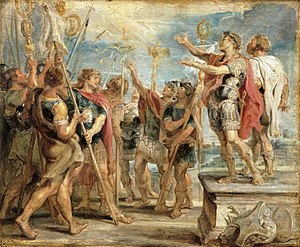
A good friend who is a creationist recently offered me a creationist article to read (“or refute”). The article’s arguments against evolution are based on:
- a misstatement of, or failure to understand, the arguments for evolution itself
- a glossing over of arguments for evolution by misleading oversimplifications
- a failure to address the counter-evidence for evolution cited by evolutionary scientists
- “bait and switch” — “sloppy language leading to sloppy thinking”
The article my friend gave me is Tortoises of the Galapagos by Lita Cosner and Jonathan Sarfati, apparently found in creation.com.
Here is the critical passage:
Evolution from goo to you via the zoo would require new genes encoding encyclopedic amounts of new information. But the tortoises’ adaptation to various island environments can be explained by the sorting out of already existing genes with some of these then eliminated by natural selection. . . .
The two sentences here do not logically follow one another. The authors have created a false argument against evolution by juxtaposing two sentences that in fact address different questions: by placing them together they confuse the question and lead the uninformed reader to think the authors have cleverly rebutted the foundation of evolution’s case. Continue reading “A Creationist Method of Argument (and exposing the lie of those who compare mythicism to creationism)”

 Two archaeologists, one Israeli (Israel Finkelstein) and one American (Neil Asher Silberman), have bizarrely managed to repackage a Taliban-like ancient biblical legal code into a modern enlightened expression of human rights, human liberation and social equality.
Two archaeologists, one Israeli (Israel Finkelstein) and one American (Neil Asher Silberman), have bizarrely managed to repackage a Taliban-like ancient biblical legal code into a modern enlightened expression of human rights, human liberation and social equality.

 Thomas L. Brodie presents an argument that the Gospel of Mark was in its basic outline, plot and structure based on the Elijah-Elisha narrative in the Old Testament. I am not quite sure what to make of his case at times, but cannot deny its interest. I have no problem accepting that Mark used some of the miracle stories from Elijah and Elisha as templates for his Jesus miracles, but Brodie goes much further than this. His book is
Thomas L. Brodie presents an argument that the Gospel of Mark was in its basic outline, plot and structure based on the Elijah-Elisha narrative in the Old Testament. I am not quite sure what to make of his case at times, but cannot deny its interest. I have no problem accepting that Mark used some of the miracle stories from Elijah and Elisha as templates for his Jesus miracles, but Brodie goes much further than this. His book is 


 Rick has posted another constructive response,
Rick has posted another constructive response, 

